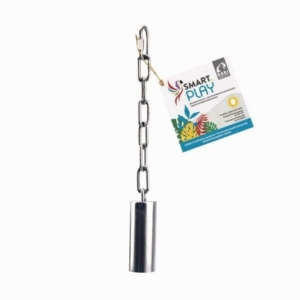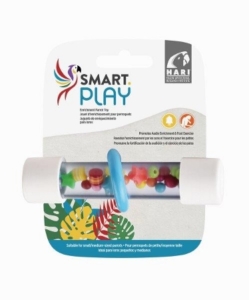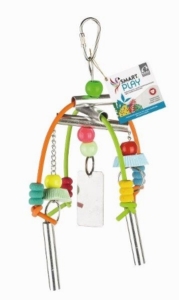We at the Hagen Group take your privacy very seriously and as such we have updated our privacy and cookies policy to make it clearer how we use your personal data, including how we use cookies and similar technologies (“cookies”) to help give you the best experience on our site and to show you relevant advertising. If you continue to use this site, we’ll assume that you’re happy to receive all cookies. Privacy Policy
Foot & Audio Toys For Birds
HARI SMART.PLAY Foot & Audio Toys
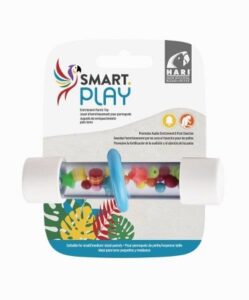 Foot toys are a great addition to any bird toy collection and are great way to peak curiosity, entertaining your bird all while developing balance, dexterity and strength. Playing with foot toys demands a lot of skill that can take some time to acquire. If your parrot is a young fledgling, this can be quite entertaining to watch as the parrot gains ability and learns how to play successfully. Older birds who haven’t experienced many toys can be mentored to learn to have fun with these types of smaller, less intimidating toys.
Foot toys are a great addition to any bird toy collection and are great way to peak curiosity, entertaining your bird all while developing balance, dexterity and strength. Playing with foot toys demands a lot of skill that can take some time to acquire. If your parrot is a young fledgling, this can be quite entertaining to watch as the parrot gains ability and learns how to play successfully. Older birds who haven’t experienced many toys can be mentored to learn to have fun with these types of smaller, less intimidating toys.
- Develops dexterity and balance
- Relieves boredom and helps prevent feather plucking
- Provides mental and physical stimulation
- Helps relieve anxiety by providing entertainment
Questions about PVC and Birds
The PVC material in the toys are made from uPVC and are considered safe & non-toxic for our birds. The difference between uPVC and PVC is that uPVC (or Rigid PVC) does not contain any phthalates or BPA.
Available Sizes
| Item# | Description | Dimensions | For Parrot Size |
| 81002 | Rattle Foot Toy | 18cm (7″) L | Ø 3 cm (1.2″) | S/M |
| 81016 | Willow in Spring | 22cm (8.7″) H | S |
| 81063 | Stainless Steel Bell | 23cm (9″) H | Ø 4 cm (1.5″) | S/M |
Choosing the Right Foot Toy for Your Parrot
- Ensure toys are made of bird safe materials and design.
- Species appropriate (design, size, texture material and weight) – the size and weight of the foot toys need to be species specific so that larger species can’t swallow or break off pieces. Smaller species may get stuck in devices that are too large. They may also lose interest quickly if there is a lack of smaller fun parts.
- Age & skill appropriate – younger birds may not yet have the strength to balance on one foot and hold a foot toy in the other. This comes with practice. Lighter weight toys should be offered in the beginning.
- Be creative, re-use, recycle from salvageable toy parts.
- 2 in 1 – small disposable foot toys are great for hiding non-perishable food inside offering a foraging opportunity as well. Shredding up a toy is fun in itself, but obtaining a reward is even more rewarding!
- Some designs and materials can stimulate preening activities such as pacifiers or toothbrush.
- If tempted to offer household items as foot toys, be aware of the dangers some of these items may pose. Keys can be made of metals that may be a concern for toxicity (lead, zinc and copper). New keys can be coated in a special spray to prevent tarnishing, which can also be potentially harmful. Key-chains can pose a threat as your bird may become entangled in the key ring itself or other items attached to it. Pens and pencils lying around the house are an attractive item to a curious parrot, but some pencils may contain lead and pens can have small hazardous removable parts (and ink) that could be accidentally ingested.
Ideal Set-up for Parrot Playtime
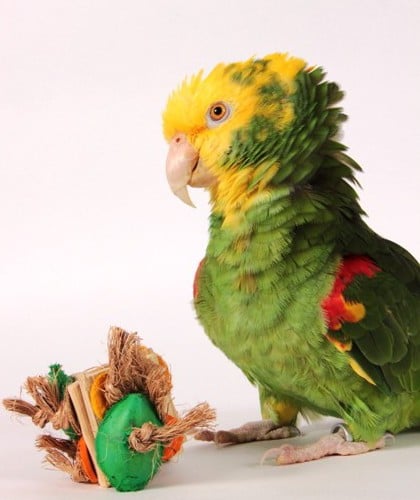
Younger or unseasoned parrots won’t have the dexterity, balance and stability needed to tackle awkward surfaces that don’t remain steadfast. Therefore in order to successfully play with foot toys, your bird requires a stable flat surface. A tabletop surface activity center preferably with a surrounding raised edge to keep the toys contained makes an excellent playground for foot toys.
A foot toy box can be introduced in your bird’s day cage, preferably not under a perch, food or water dish to avoid soiling from droppings.
If you are traveling long distances with your parrot or just visiting a friend for the afternoon, foot toys can make a great accessory in a carrier during travel. They can be removed from the carrier at arrival and used on a safe non-slippery surface anywhere you are.
Combining Different Activities
Preening devices that are small enough to be held by your parrot’s foot such as the small balls with bristles or a simple tooth brush make great additions to a foot toy collection. They are easy and inexpensive to obtain, especially if you are travelling. They encourage preening as well as dexterity and balance needed in order to hold and play with a foot toy. They should be washed or replaced on a regular basis. Bristles on these items should not be so thin as to entangle your bird.
Vigilance is Key
Frequently engaging in activities with your parrot, as well as observing his behavior and demeanor can help you recognize signs of discomfort or distress. Recognizing your parrots daily playing habits and skills can reveal preoccupying health concerns. A bird that used to engage in playing with foot toys no longer has the strength, confidence, balance or interest to do so can reveal preoccupying health concerns.
Popular Articles
-

HARI/Loro Parque Lifetime Membership Sponsorships
HARI/Hagen Group Announces Loro Parque Foundation Lifetime Membership Sponsorship of Dr. Lora Kim Joyner of One Earth Conservation and Enrique Pucci of Ara Manzanillo
Read More -
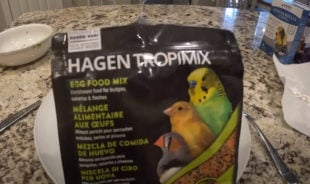
Supercharged Egg Food for Birds
Supercharged egg food recipe for caged and aviary birds.
Read More -
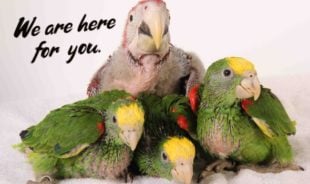
Our Promise To You During COVID-19
With growing global concerns around COVID-19 (“coronavirus”), we hope you, your family and your precious pets remain healthy and safe. With so many unknowns presented during COVID-19, we want to provide you with an update on our response to date and our commitment to you moving forward.
Read More




